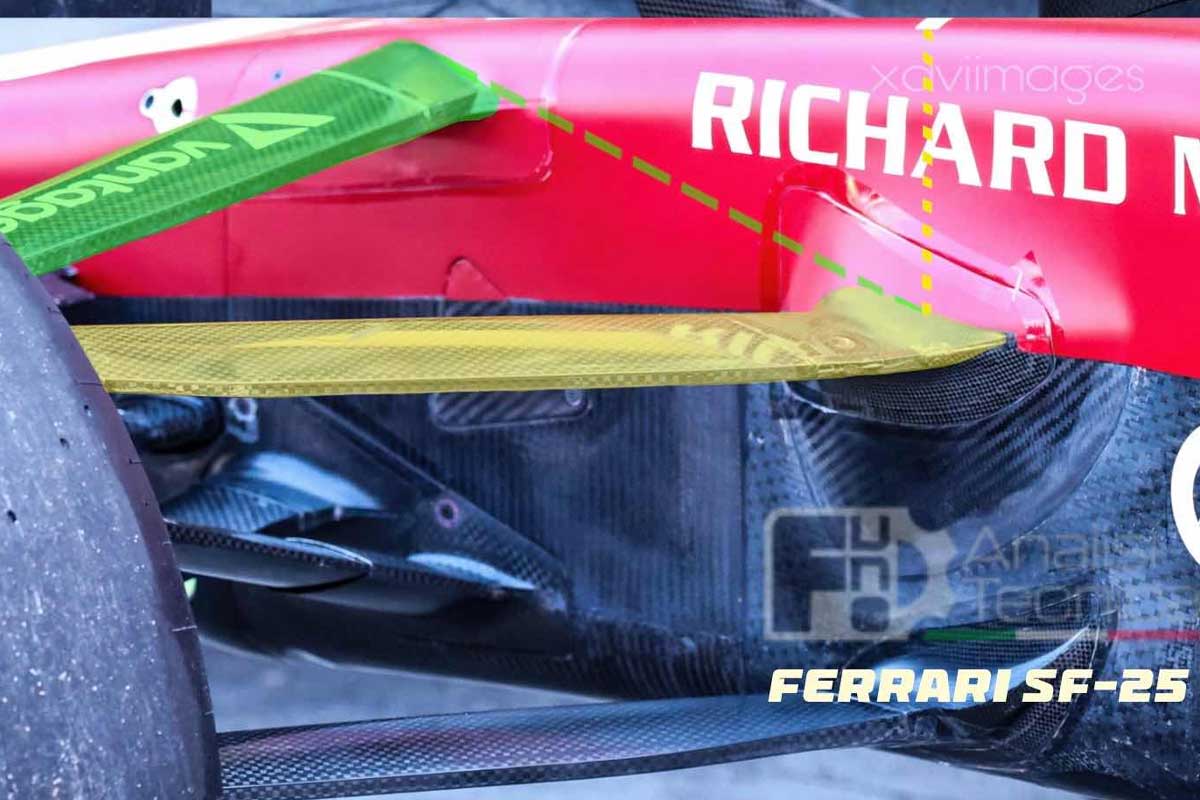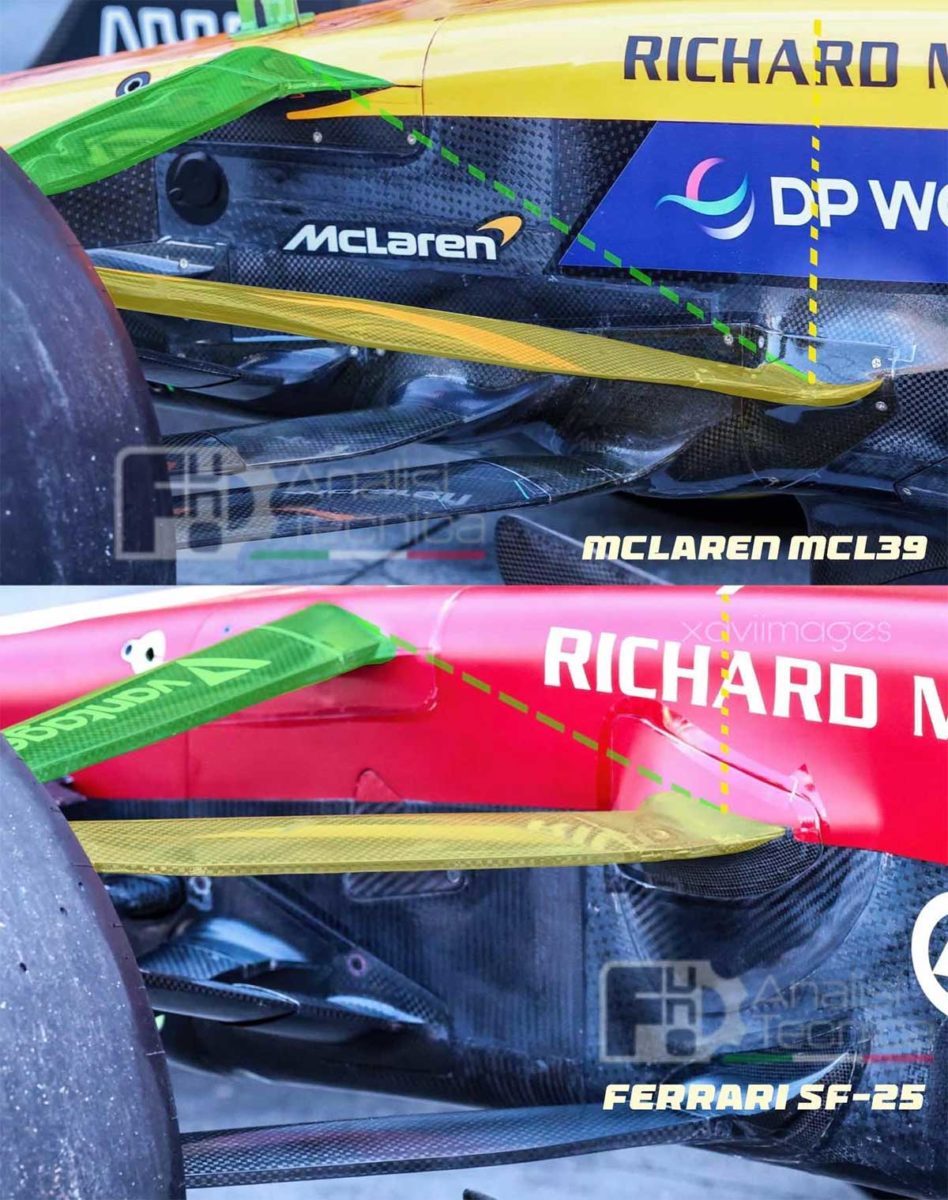
The 2025 season of Formula 1 promises to be rich in technical developments, and one of the most interesting battles is currently taking place in the comparison between the front suspensions of Ferrari and McLaren. The Ferrari SF-25 and McLaren MCL39 adopted a pull-rod suspension system, but with very different results. While McLaren reaps the rewards of its boldness, Ferrari seems to be struggling to master its new configuration. Let's take a closer look at the differences between these two approaches.
The introduction of the pull-rod suspension system in Ferrari's SF-25 marked a turning point in the design of the 2025 car. This choice was motivated by the desire to optimize aerodynamics and provide greater tuning flexibility. However, the Unlike McLaren, Ferrari didn't push this solution as far as it could have. While McLaren has radically exploited the potential of the pull-rod system, Ferrari has opted for a compromise, notably with its front suspension, which is less aggressive than that of its rival.
The main difference lies in the configuration of the suspension arms. The upper and lower control arms of both cars are similarly positioned, but the SF-25 has a higher upper arm.

The suspension's ability to resist bottoming under braking, plays a crucial role in the performance of a Formula 1 car. McLaren has designed a suspension with a lower upper link than Ferrari's, offering better control. This reduces the load transfer to the front of the car during braking, resulting in better front tire management and reduced wear, without compromising aerodynamic stability.
For Ferrari, the design of the higher upper arm in the SF-25 seems to have the opposite effect. Under braking, this results in a greater transfer of load to the front, making the front tires work harder. Although this configuration limits suspension oscillation and improves aerodynamics, it leads to oversteer problems and more difficult front tire management.
McLaren, on the other hand, was able to exploit the advantages of pull-rod more effectively. The team pushed the design to the extreme, resulting in better weight distribution and optimal tire temperature management. These bold choices have enabled McLaren to compete more directly with Red Bull, without encountering Ferrari's difficulties.
McLaren engineers, especially Rob Marshall, who brought his expertise from Red Bull, have anticipated the problems associated with the extreme position of the suspension arm. McLaren thus seems to have found the right balance, giving the MCL39 a more stable ride that's easier for drivers to manage.